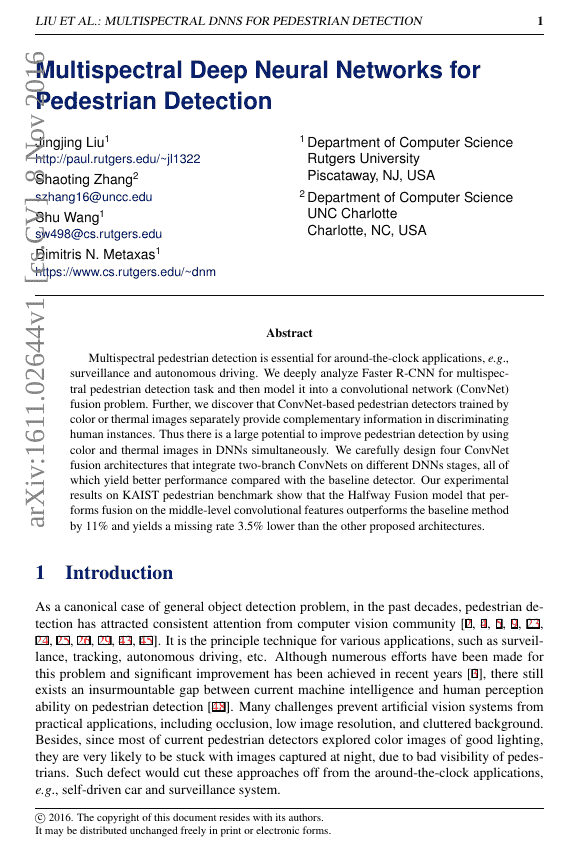Command Palette
Search for a command to run...
Jingjing Liu; Shaoting Zhang; Shu Wang; Dimitris N. Metaxas

Abstract
Multispectral pedestrian detection is essential for around-the-clock applications, e.g., surveillance and autonomous driving. We deeply analyze Faster R-CNN for multispectral pedestrian detection task and then model it into a convolutional network (ConvNet) fusion problem. Further, we discover that ConvNet-based pedestrian detectors trained by color or thermal images separately provide complementary information in discriminating human instances. Thus there is a large potential to improve pedestrian detection by using color and thermal images in DNNs simultaneously. We carefully design four ConvNet fusion architectures that integrate two-branch ConvNets on different DNNs stages, all of which yield better performance compared with the baseline detector. Our experimental results on KAIST pedestrian benchmark show that the Halfway Fusion model that performs fusion on the middle-level convolutional features outperforms the baseline method by 11% and yields a missing rate 3.5% lower than the other proposed architectures.
Code Repositories
Benchmarks
| Benchmark | Methodology | Metrics |
|---|---|---|
| 2d-object-detection-on-dronevehicle | HalfwayFusion | Val/mAP50: 68.2 |
| multispectral-object-detection-on-kaist | Halfway Fusion | All Miss Rate: 49.18 |
| object-detection-on-eventped | Early-Fusion | AP: 47.4 |
| object-detection-on-inoutdoor | Early-Fusion | AP: 58.3 |
| object-detection-on-stcrowd | Early-Fusion | AP: 54.4 |
Build AI with AI
From idea to launch — accelerate your AI development with free AI co-coding, out-of-the-box environment and best price of GPUs.